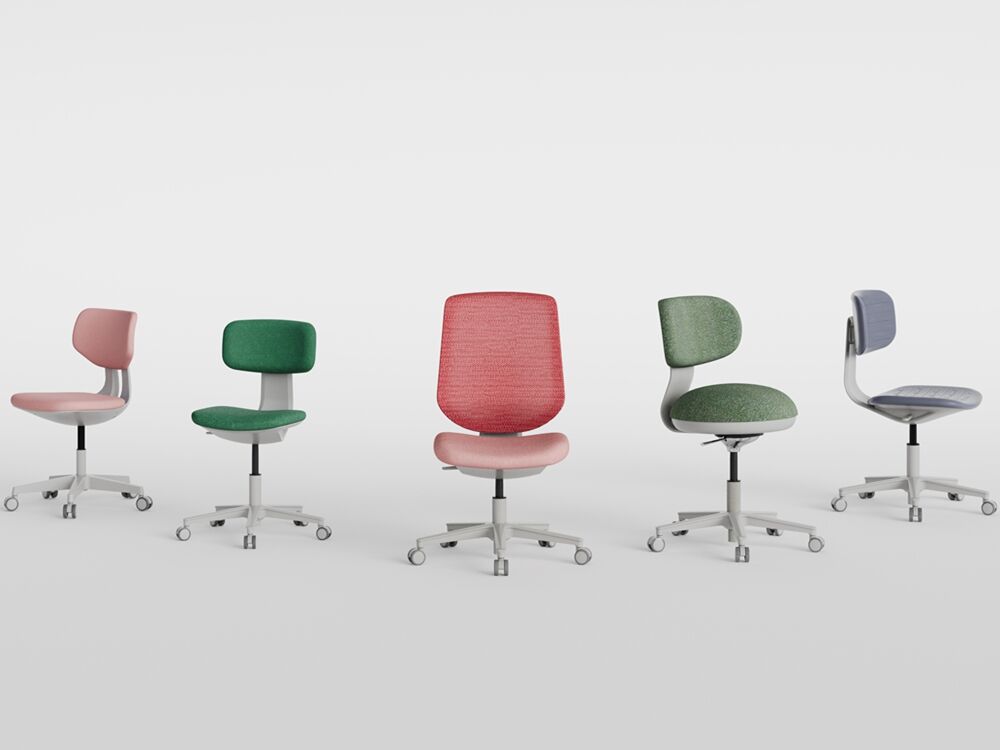
The Professional Aesthetic of Leather Office Chairs
Elevating Executive Office Design
Leather office chairs are synonymous with luxury and sophistication, making them a staple in executive office design. The presence of these chairs instantly elevates the atmosphere, lending a sense of authority and cultivated taste to any space. Industry research suggests that well-designed office environments, marked by high-quality furnishings like leather chairs, can increase productivity and positively influence client perceptions. When potential clients walk into an office adorned with leather seating, it conveys an image of success and commitment to excellence. Therefore, incorporating leather office chairs into executive offices is not merely a matter of aesthetics but also a strategic decision for enhancing business outcomes.
Color and Finish Options for Boardroom Appeal
A variety of colors and finishes are available for leather office chairs, allowing businesses to align their choices with corporate branding and desired boardroom aesthetics. From classic blacks and browns to modern hues like white and cream, these chairs can be tailored to fit any corporate identity. According to color psychology studies, certain colors in office settings can significantly affect moods and professionalism. For instance, darker colors often convey power and reliability, while lighter shades can enhance openness and creativity. This makes choosing the right color and finish of leather chairs a tactical choice for creating an environment that fosters motivation and engagement in meetings.
Leather vs. Fabric: Why Leather Dominates Conference Chairs
When comparing leather and fabric office chairs, leather emerges as the preferred option for conference settings due to its superior aesthetics, comfort, and maintenance qualities. Leather chairs exude a robust sense of status and prestige highly valued by executives. Studies indicate a clear preference for leather in conference rooms because it not only projects a sense of professionalism but also offers unparalleled longevity and ease of cleaning compared to fabric. The combination of comfort and minimal upkeep makes leather an ideal choice for furnishing spaces that require a touch of elegance and functionality, streamlining both the management and experience of professional gatherings.
Ergonomic Advantages for Extended Productivity
Lumbar Support and Posture Alignment
The importance of lumbar support in leather office chairs cannot be overstated. These chairs are designed to promote proper posture alignment, which is crucial for maintaining comfort during extended periods of sitting. Health guidelines from the likes of the American Chiropractic Association emphasize that chairs with adequate lumbar support can significantly reduce the risk of back pain and other musculoskeletal issues. Emphasizing lumbar support in leather office chairs positions them as vital tools for enhancing ergonomic efficiency in the workplace.
Adjustable Features for Customized Comfort
Leather office chairs offer specific adjustable features that cater to the needs of various users, making them ideal for office settings. Features such as adjustable seat height and backrest angles are essential for personalized comfort, contributing to sustained productivity throughout the day. Research from ergonomic studies underscores the importance of customization options, linking adjustable features in chairs with increased worker comfort and productivity. This adaptability helps create a customized seating experience, making these chairs a preferred choice in office environments.
Breathability in High-Pressure Meeting Scenarios
In high-pressure meeting scenarios, the breathability of seating materials is crucial for maintaining focus and comfort. Leather chairs are often praised for their ability to provide comfort without compromising breathability. Compared to synthetic materials, leather naturally allows for better airflow, reducing sweat and discomfort during long meetings. Experts often highlight the significance of chair comfort in sustaining concentration and minimizing fatigue. Thus, selecting leather office chairs, known for their comfortable design, can play a significant role in fostering a productive meeting environment.
Durability in Demanding Corporate Environments
Longevity Compared to Mesh Office Chairs
Leather office chairs boast impressive durability when compared to mesh options, particularly regarding wear and tear in bustling corporate environments. Known for their sturdy construction and resilience, leather chairs can withstand constant use and pressure, maintaining their appearance and functionality over time. This longevity often translates to significant cost savings for businesses. A lifecycle cost analysis reveals that despite the higher initial price, the reduced need for replacements and maintenance over the years makes leather chairs a smart investment.
Maintenance Tips for Conference Room Chairs
To preserve the appearance and functionality of leather conference chairs, regular maintenance is key. Here are some practical tips:
- Regular Cleaning: Wipe down chairs with a damp cloth to remove dust and dirt.
- Conditioning: Apply a leather conditioner every few months to keep the material supple.
- Avoiding Direct Sunlight: Protect chairs from prolonged exposure to sunlight to prevent fading and cracks.
Research indicates that well-maintained chairs can last over a decade, whereas neglected ones may require replacement every few years, highlighting the importance of leather care.
Cost-Effectiveness Over Time
Leather chairs seem like a hefty initial investment; however, their longevity and minimal maintenance costs define their cost-effectiveness over time. Companies investing in high-quality leather seating often report substantial financial returns due to decreased replacement and repair needs. Case studies show that businesses opting for durable leather chairs experience enhanced productivity and reduced office expenses. This makes leather chairs a prudent choice for companies focused on long-term savings and office efficiency.
Enhancing Corporate Image with Premium Materials
Client Impressions in Executive Meetings
The choice of high-quality leather chairs in executive meetings significantly influences client perceptions, paving the way for strengthened business relations and successful negotiations. Research consistently shows a preference for luxury materials in corporate settings, highlighting leather's ability to convey sophistication and attention to detail. A survey conducted by Business Interiors revealed that over 70% of executives reported a more favorable impression of companies that utilized high-end furnishings. This indicates that investing in premium seating, like leather office conference room chairs, can enhance client perceptions and facilitate a positive business environment.
Synergy with Modern Office Interiors
Leather office chairs seamlessly blend with contemporary office designs, contributing to an elegant and cohesive work atmosphere. Design experts often emphasize the importance of cohesive office aesthetics, where all elements of a room harmonize to create a professional and inviting ambiance. Leather's timeless appeal allows it to fit effortlessly into modern office interiors, enhancing the overall visual appeal and promoting a sophisticated image. By integrating leather meeting room chairs into the design, businesses can reinforce their commitment to quality and style, aligning their physical spaces with their brand's identity and values.
The Psychology of Leather in Leadership Spaces
The use of leather materials in leadership spaces is often associated with reinforcing authority and professionalism due to its psychological implications. Leather exudes a sense of power and status, making it an ideal choice for environments where leadership and decision-making are focal points. Psychological studies highlight how context and environment influence perceptions; thus, incorporating leather into leadership spaces can impact how authority is perceived. Expert opinions suggest that such settings command respect and convey the professionalism necessary for effective leadership, underscoring leather's strategic role in shaping perceptions within the corporate hierarchy.









